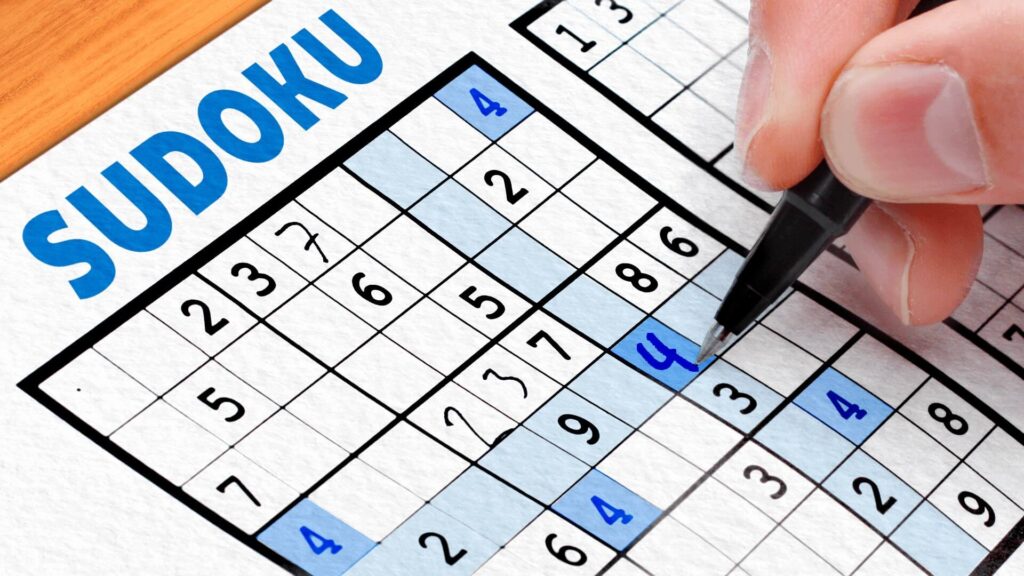Sudoku NYT: The Logic Puzzle That Keeps Minds Sharp

Sudoku, a puzzle that blends structure with logic, has evolved into a global phenomenon. Among its many online homes, the version curated by The New York Times has earned a special place among puzzle enthusiasts. Designed for everyone from first-time solvers to expert players, the Sudoku NYT offering is a staple of its digital and print games collection. This article takes a deep dive into the fascinating history of Sudoku, its unique place at The New York Times, various solving strategies, mental benefits, and the evolution of its many variations.
The Historical Journey of Sudoku
The origins of Sudoku date back to 19th-century France, where number-placement puzzles first emerged in newspapers. However, the puzzle we now know as Sudoku was created much later, in 1979, by American architect Howard Garns. Published under the title “Number Place,” this modern version found an unexpected fan base in Japan during the early 1980s.
It was in Japan that the puzzle was renamed “Sudoku,” a shortened form of a phrase meaning “the digits must be single.” This version was introduced by Maki Kaji, a Japanese publisher often credited as the “godfather of Sudoku.” He recognized its potential and helped spread its popularity through his company, Nikoli. The international craze didn’t ignite until the early 2000s when Wayne Gould, a retired judge from New Zealand, developed a Sudoku generator and began marketing it to newspapers across the globe. His work played a vital role in bringing Sudoku into the mainstream consciousness.
Sudoku’s Presence at The New York Times
As Sudoku’s global popularity surged, The New York Times recognized the value it offered to its audience. The newspaper began featuring Sudoku puzzles in its daily editions and, more recently, expanded the experience online. Whether you’re reading the print edition with your morning coffee or solving the digital version on your phone during a commute, NYT’s Sudoku puzzles offer consistent, thought-provoking entertainment.
Through the NYT Games section and its mobile app, the platform provides puzzles at multiple difficulty levels—easy, medium, and hard—catering to a diverse group of solvers. Enhanced with digital features like autofill, note-taking, and error highlighting, the online version also offers a more interactive and modern twist on the traditional paper puzzle.
Understanding the Core Mechanics of Sudoku
At first glance, Sudoku appears deceptively simple. The standard format is a 9×9 grid divided into nine 3×3 squares. A few numbers are pre-filled, and the objective is to populate the rest of the grid so that each row, column, and square contains the numbers 1 through 9 exactly once.
What makes Sudoku so addictive is the way it challenges the brain to find logical patterns and deductions without requiring any math skills. It’s pure logic—and that’s the charm.
Effective Strategies for Solving Sudoku
For those just beginning their Sudoku journey, it helps to learn some foundational tactics. As one gains experience, more advanced strategies can be incorporated to solve tougher puzzles with confidence.

Fundamental Techniques:
-
Elimination Method: This involves identifying which numbers can or cannot go into a particular square based on what’s already present in its row, column, and box.
-
Row and Column Scanning: Carefully scanning across rows and columns to spot numbers that are missing helps narrow down possibilities.
-
Box Counting: Frequently revisiting each 3×3 square and checking which numbers are still missing can be instrumental in progressing through a puzzle.
More Advanced Approaches:
-
X-Wing Pattern: This strategy involves spotting pairs of numbers across rows and columns that form a rectangle, enabling the elimination of certain candidates from intersecting areas.
-
Swordfish Technique: A more complex version of X-Wing, this pattern involves three rows and three columns. When applied correctly, it can simplify the puzzle by eliminating numbers from numerous cells.
-
XY-Wing Logic: Using three interconnected cells with overlapping candidates, XY-Wing helps eliminate specific possibilities from other related squares.
These approaches aren’t just about finding solutions—they teach patience, observation, and methodical thinking.
Mental Benefits of Playing Sudoku
Solving Sudoku puzzles regularly can provide several cognitive perks. For one, it exercises memory and enhances focus. Every move demands short-term memory recall while simultaneously planning future moves. Studies suggest that mental activities like Sudoku can contribute to better mental agility and possibly even delay symptoms of age-related cognitive decline.
Beyond mental sharpness, the puzzle offers a break from screen-heavy tasks and stress. It’s meditative and immersive, providing a kind of mental retreat that doesn’t require any equipment—just your brain and a bit of time.
Exploring Different Sudoku Variants
The traditional 9×9 grid is just the beginning. Over the years, Sudoku has inspired numerous spin-offs that add new rules and challenges to the classic format. These variants have expanded the puzzle’s appeal and introduced exciting twists for seasoned solvers.
-
Mini Sudoku: Designed on a 6×6 grid, this smaller version is perfect for beginners or for a quick mental workout.
-
Killer Sudoku: This hybrid version combines Sudoku with arithmetic constraints. Instead of initial clues, players are given “cages” with specific sums that must be achieved using numbers that also satisfy regular Sudoku rules.
-
Hyper Sudoku: An enhanced variant that includes four additional 3×3 shaded areas that must also contain unique digits from 1 to 9.
-
Samurai Sudoku: This mega-puzzle includes five overlapping grids, requiring solvers to think across multiple dimensions.
Each of these variations keeps the foundational logic of Sudoku intact while adding layers of complexity, creativity, and excitement.
Mathematical and Computational Aspects of Sudoku
Sudoku is more than a pastime—it also has academic value. Mathematicians and computer scientists view Sudoku as a form of constraint satisfaction problem, a common type in artificial intelligence and algorithm research. The goal is to fill in the grid while satisfying a set of logical constraints.
Researchers have even developed algorithms to determine puzzle difficulty. Some puzzles require only a few simple steps, while others demand deep logical inference or trial-and-error techniques. These difficulty scales help in categorizing puzzles for education, software development, and competitive play.

Sudoku’s Role in Global Competitions and Community Building
What began as a simple puzzle has now grown into a worldwide community. Sudoku enthusiasts gather online in forums, groups, and on social media to share tips, solutions, and even create custom puzzles. Major international events such as the World Sudoku Championship attract top minds from around the globe, competing for precision and speed.
The New York Times has also fostered a vibrant puzzle-solving culture. Through features, leaderboards, and time-based challenges, players engage in friendly competition and track their progress over time. This community aspect not only enhances enjoyment but also encourages consistent engagement with logic games.
Why Sudoku Remains a Timeless Brain Game
There’s a reason Sudoku has stayed relevant while so many other games have faded. Its simplicity makes it accessible, yet its depth ensures a lasting challenge. Whether you’re a casual player who enjoys solving puzzles during a coffee break or a hardcore enthusiast seeking the most diabolical grid, Sudoku always has something to offer.
The New York Times has managed to keep this classic puzzle modern and engaging, offering fresh puzzles every day and maintaining a strong digital presence. With its intelligent layout, easy access, and high-quality puzzles, NYT Sudoku continues to be a go-to destination for anyone looking to sharpen their mind.
Final Thoughts
Sudoku is more than just numbers in boxes—it’s a mental discipline, a hobby, and for many, a daily ritual. The New York Times has successfully elevated the experience by providing well-curated puzzles that challenge and entertain across all skill levels.
By understanding the logic behind Sudoku, embracing its strategies, and exploring its many variations, players unlock a world of intellectual stimulation. Whether you aim to beat the daily NYT puzzle or push yourself with complex variants, Sudoku offers a fulfilling journey through the art of logic.




